While late winter and spring are the peak seasons for the many of the bulbs, the lesser known autumn flowering varieties offer fresh seasonal delight at a time when many flowering plants have finished or are passing over. The triggers for these bulbs are a drop in temperature, declining day length and summer rain. They are neither easily available nor widely grown but that may be a chicken or egg situation because many of them are not difficult or touchy.
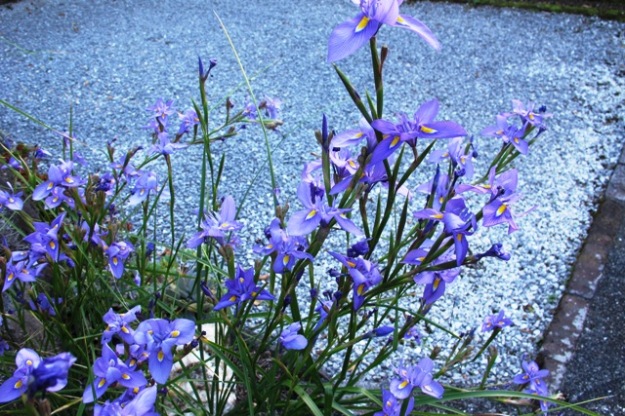
Moraea polystachya – the autumn flowering peacock iris
The bulb that gives us the longest flowering season of all at this time of the year is the lovely lilac- blue, autumn Moraea polystachya from South Africa. Each flower is a dainty iris and while individual blooms are brief, new ones open down the stem for many weeks on end, stretching into months. The foliage is fine and light and the wiry flower stems can reach about 50 cm high. It grows from corms and will gently seed down without becoming an undesirable weed. It is particularly attractive popping up in cracks between pavers or on the edges of paths. The problem will be sourcing corms to buy. If you see one growing in somebody else’s garden, ask for seed which is easily raised and should flower in its third year.
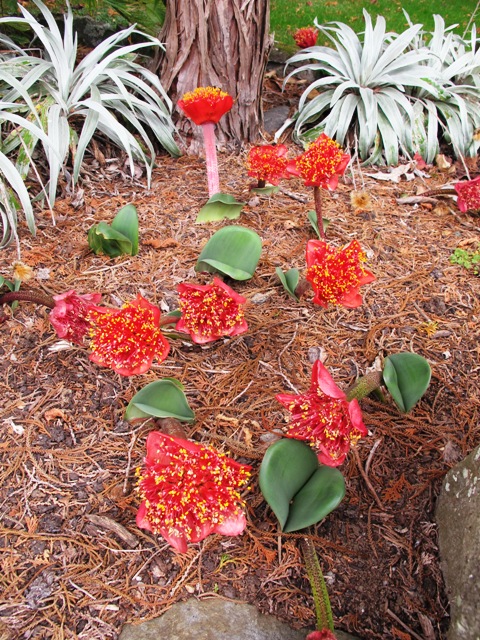
Haemanthus coccineus
Haemanthus coccineus is most valued for its striking winter foliage – enormous, fleshy leaves which lie flat to the ground, giving the plant its common name of elephant ears. But in early autumn, up pop bristly red flowers looking somewhat like a dish brush head. In fact they are a large cluster of red stamens, each tipped with a generous amount of golden pollen and all encased in six petals that almost resemble a plastic cup. Flowering is triggered by rain and comes just before the new foliage starts to emerge. Plants need excellent drainage and some protection from heavy frosts but will thrive in semi shade.
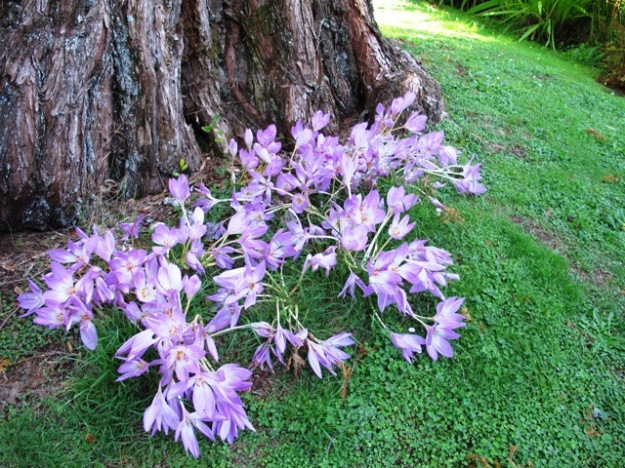
Colchicum autumnale
Colchicums are often referred to as autumn crocus, but they are only distant relatives at best and are generally much larger flowered toughies that are easy to grow. Most are so vigorous that they can be established in grass for the meadow look, but keep them away from mown areas because the foliage hangs on right through to spring. Each flower is a cup with six petals and while not long lived, a bulb can put up a succession of blooms. It flowers well before the foliage appears. Most colchicums hail from Europe and are in lilac pink to purple shades. For those who prefer all their flowers in white, there is a white form available but purists may prefer to stay with the dominant colours of the European meadows. The major drawback to the colchicums is that the foliage takes such a long time to die off that it can have a protracted scruffy period but it does at least have lush foliage in the bare winter months.
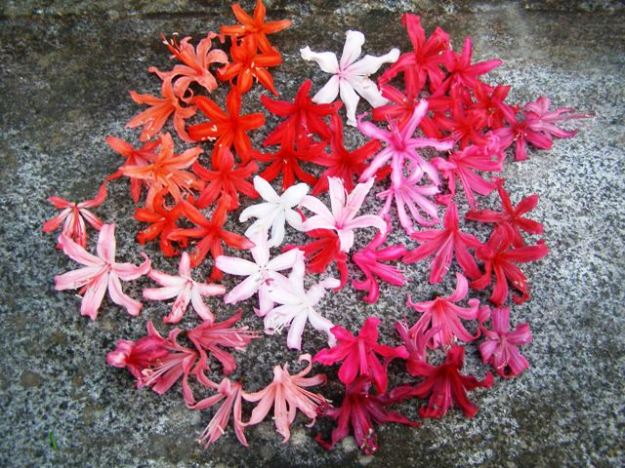
Nerines sarniensis hybrids
Despite their common name of the “Guernsey lily”, nerines hail from South Africa. While there are over 30 different species, the ones most widely available include N. fothergillii (scarlet flowers often referred to as the ‘spider lily’), N. bowdenii (late season flowering, sugar pink with long stems) and N. sarniensis hybrids. It is the hybrids that bring the larger flowers in desirable colours which can range from smoky hues, purple, salmon apricot and across the whole spectrum of shades associated with pink and red. There are white cultivars though I would have to say that we have never found a good pure white form which performs well. All make excellent cut flowers and have a long record of use in floristry.
Nerines have large bulbs which like to sit half in the soil and half baking in the sun. They will struggle in very cold, wet conditions and won’t flower in the shade.
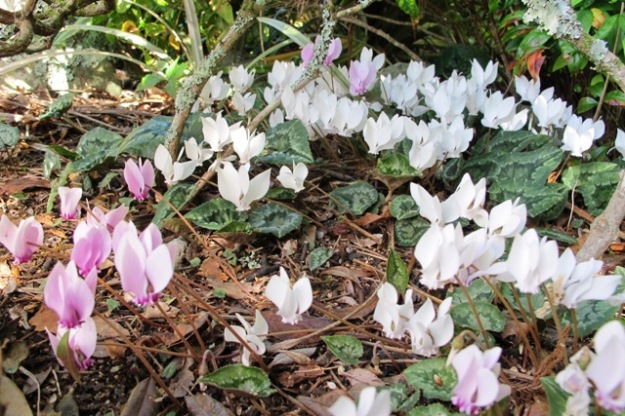
Cyclamen hederafolium
Cyclamen hederafolium is one of the star performers for us, opening its first flowers as early as January and continuing through late summer to peak in autumn. Once the flowering is finished, the lovely heart shaped dark green leaves which are lightly marbled in silver remain a feature through winter. Flowers vary in colour from pure white, pale pink to dark pink, though not on the same tuber. As long as the tuber does not rot out, it can get very large over time – at least as big as a bread and butter plate. It is best nestled into the soil, as opposed to buried beneath. In C. hederafolium, the roots, flower stems and leaves all sprout afresh each year from the top of the tuber so you need to plant it the right way up. It will grow in full sun through semi shade to woodland conditions of high shade and, when happy, it will seed down over time and naturalise – as long as you don’t garden around it with weed spray. Good drainage is the key.
The species cyclamen have a delicate charm which has long gone from the pot hybrids sold as indoor plants. C. hederafolium is the easiest and most reliable of the species. There is nothing rare about it, except I failed to find anybody selling it this season. It is easy to raise from seed if you know of somebody with a plant. Harvest the seed in late spring and sow it in a pot or tray immediately. It can reach flowering size in as little as 18 months.
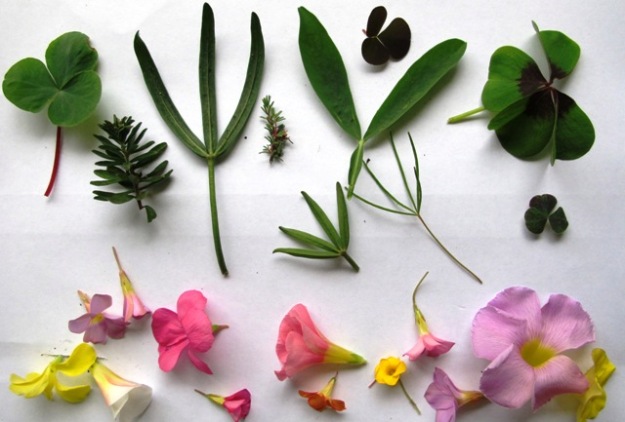
Ornamental oxalis
Oxalis. Spare a thought for the poor, maligned oxalis family which gets dismissed out of hand because of a few bad eggs. Call them by their romantic common name of wood sorrel if it makes you feel better. There are over 800 members of the family and by no means are they all invasive weeds. Neither are they all worthwhile garden plants either, but some of them are autumn stars for us. All oxalis need full sun because they only open their flowers in the bright light. If you remain nervous about them, plant them in wide, shallow pots and place them on sunny steps to give you a seasonal display. When you repot them after a year, you can see clearly which ones show invasive potential because they will have formed multitudes of babies. These ones are best kept in pots forever but others are perfectly garden safe.
Over the years, we gathered up maybe 30 different oxalis species and you can often find dry bulbs of different ones offered for sale on Trade Me. Some have very short flowering seasons and I am not sure it is worth my time to repot them each year. Others are exceptionally good. The best of all is O. purpurea alba. It has an abundance of very large, glistening pure white flowers with a golden centre and it flowers over a very long period. The foliage is a flat mat of green, slightly hairy, clover-like leaves. We have had it in the garden here for decades and it has never been badly behaved or shown invasive tendencies. There are other forms of O. purpurea with pink flowers and with burgundy red foliage (O. purpurea ‘Nigrescens’). While these are also very showy, they can be a bit too rampant and are best kept in pots.
Other personal favourites are O. massoniana (feathery foliage and masses of pretty flowers in apricot with a yellow eye), O. hirta lavender and the sunny yellow O.luteola. There are no blue or green flowered oxalis, as far as I know, but they come in pretty much every other colour.
Other autumn flowering bulbs which we value, but which will be even harder to source are Lycoris aurea (which looks like a golden nerine), Rhodophiala bifida and some of the autumnal tricyrtus, particularly T. macrantha.
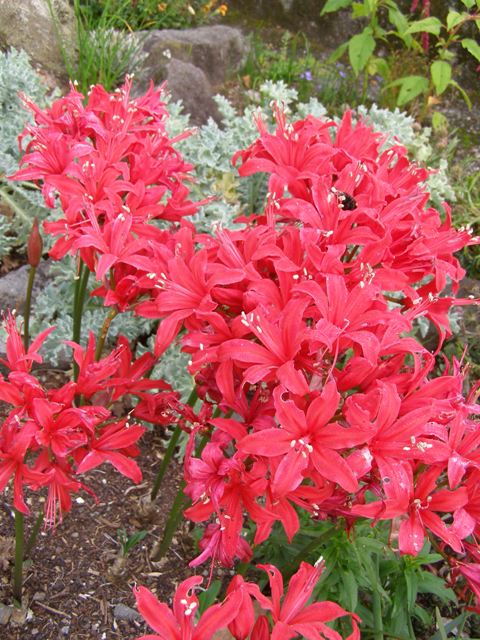
The Guernsey Lily
Guernsey’s only claim to nerines is cut flower production. The exact method of arrival to the Channel Islands is unknown but there are records of N. sarniensis growing, and presumably flowering, in Paris as early as 1630. By the 1800s, Guernsey already had a flower export trade in full swing and was sending nerines to England. The local folklore version, laying claim to the nerine, has charm.
The Guernsey lily folk tale from the Visit Guernsey website:
Legend holds that a handsome fairy prince met and fell madly in love with Michelle de Garis, a beautiful Guernsey girl. Michelle left her cottage early one morning to see to her cows. As she entered the meadow, she was surprised to find a young man asleep on the grass. He had a particularly small stature, was finely proportioned, and remarkably handsome.
Michelle stood and admired the small man dressed in green and with bow and arrow. When he awoke he told Michelle that he was a fairy prince from England and asked for her hand in marriage, as they had both instantly fallen in love. She agreed but as they headed to Fairyland she asked that she leave a token to reassure her family. The prince gave her a bulb, which she planted.
Michelle’s mother later discovered a beautiful flower above Vazon bay, on the west coast of Guernsey. It was the colour of Michelle’s shawl and sprinkled with elfin gold – the Guernsey lily.
Sometime later on, many fairy men came from Fairyland, entranced by Michelle’s beauty and looking for a Guernsey girl of their own. They asked that Guernseymen gave up their wives and daughters, which ended in many battles between the fairies and Guernseymen. The Rouge Rue (Red Road) is said to have been named after a particularly fierce battle.
First published in the May issue of NZ Gardener and reprinted here with their permission.
